Although I own a honkin’ big barbecue, I rarely use it for preparing a nice steak. I prefer the control of cooking a quality piece of meat in my mother’s cast iron skillet on my stovetop, where I can watch it carefully and avoid drying it out. Meat isn’t cheap, and it’s a “treat” food rather than an everyday thing, so I want it to be absolutely perfect, whether I’m enjoying it alone, or sharing it with a guest.
The second-most-often question I am asked (after “How do I get everything hot on the table at the same time?”) is
“How do I tell when a steak is done?”
For any home cook, there is only one answer: buy yourself a really good thermometer, and use it. It doesn’t matter whether you are cooking on the barbeque, in a pan on the burner, or finishing a seared steak in the oven. The ONLY way to tell if it is done to your liking is to use a thermometer. Period. Chefs can tell without a thermometer because they have tons of experience, and well-developed instincts for timing. I don’t know about you, but I only indulge in steak once a month or so – certainly not often enough to say that I can poke a piece of meat and accurately tell if it’s medium rare.
I have a cheap thermometer, an expensive instant-read thermometer, and a probe thermometer. I would recommend the probe thermometer. It has a nice big digital read-out and an annoying alarm to tell you when your meat has reached its goal. You don’t have to spend a fortune, but you DO get what you pay for. It’s a multi-tasker (great for roasts, chicken and turkey), and a long-term investment – I haven’t actually destroyed one yet. Put it on your birthday list.

Rather than giving you the big harangue on steak choices myself, I refer you to the website “Serious Eats”. It’s an excellent resource for all things foodie, from vicarious tasting of American fast-food offerings to interesting food labs on a variety of topics. I subscribe to it.
This link (click here) will tell you a whole lot of interesting things concerning your choice of steak, and how to treat it. The information is a bit “cheffy”, but it’s good (I don’t butter-baste, for example).
This link (click here) will fill you in on things you thought you knew, but in fact were not exactly correct.
Out of all this information, here is now I choose to approach “project steak”. I like either a tenderloin (filet) steak, or a nice piece of sirloin – one is expensive and foolproof, and the other is less expensive but unforgiving if overcooked. Chefs will tell you that tenderloin lacks flavor, but I don’t agree. Also, the more marbled cuts, while tasty, don’t work for me – I don’t like to deal with the visible fat. I have been known to trim the fat cap and connective tissue layer right off a strip loin steak before grilling it up, but I feel like I pay a lot of money for the part I throw away, so I only buy strip loin when there is a good sale. Most people who know and love their meat refer a rib-eye for the perfect combination of flavor and tenderness, and they may have mine.
Steak is always a planned meal for me. I don’t just grab a steak and throw it on the barbie. I like to let it age for a few days in the fridge – if it’s screamingly bright red, it hasn’t been aged at all, and will not have the best flavor.
I no longer feel compelled to bring my steak to room temperature (check the resource on “myths”), but I do remove it from its wrapping and season it well on the morning of the day I plan to consume it, leaving it on a rack under an inverted bowl in the fridge until dinnertime.


Salt will first draw juices out of the meat. The it will dissolve in those juices and reabsorb back into the steak, seasoning it perfectly. This process takes time. I would recommend giving it an hour at least. Some resources say you can start a couple of days in advance. By starting in the morning of the day I plan to grill, I have always had excellent results.
It is important that the surface of the meat be dry when you sear it. Give it a blot with paper towel if you have to. You won’t lose very much seasoning or “meat juice”.

I like to use rice bran oil for searing anything, because it does not burn at searing temperatures, and it has no flavor of its own. This is not the place for EVOO. My routine is: heat the pan, heat the oil, sear the meat. If it doesn’t sizzle on contact with the pan, you haven’t heated the pan enough. I heat my pan for two minutes dry, and at least one minute with the oil in on high heat, just until wisps of smoke start to appear (don’t step away at this point — stuff can catch fire). You want that meat to really sizzle when it hits the pan. That’s the sound of the surface moisture evaporating, so the Maillard reaction can get going, and deliciousness can begin.
Non-stick pans are not suited for full heat. The highest I go with my non-stick is medium-high. Whatever pan you choose for grilling, it should have a nice, thick bottom. If all you own is a cheapie thin non-stick, perhaps you should go out for your grilled steak.
I prefer a cast-iron skillet, grill pan or grill plate. They’re not expensive, and they do such a terrific job.
I start on high heat, and sear the steak for 2 to 2 1/2 minutes on each side, looking for a nice dark crust. I use a timer.
There will be splattering. Wear an apron, and keep a cloth nearby.

After the initial searing on both sides, I flip back to side 1 and stick the meat thermometer probe into the middle of the steak — location is important. I drop the heat to medium low, and dome the steak with a metal bowl (although foil would do just as well). The steak gets 2 minutes on each side again.
If the desired temperature has not been reached, I flip back to side 1, drop the heat to low, keep the dome in place, and wait until the temperature is right, turning the steak again if I lost my mind and bought a really thick piece. Do buy a fairly thick steak, though — thin ones are difficult to monitor properly.
What is the desired temperature? Good question. One man’s rare is another man’s raw; one man’s medium is another man’s overcooked. I like my meat to be on the rare side, pinky-red from edge to edge, so I use 125°F as my benchmark. The meat will continue to rise in temperature for a short while after you take it out of the pan, resting under a foil tent. I personally don’t think you should take a steak above 140°F. Thoroughly well done (grey from edge to edge) is about 160 to 170°F, but at that point, you have ruined a really nice piece of meat. To each his own, though.

When we have lift-off, the steaks go on a warm plate on the back of the stove under a piece of foil, or under my doming bowl.
Resting the steak is the most important thing you do. I used to get a lot of back-chat about how a steak sizzling right off the grill was the best thing ever, but that’s just wrong. The minute you cut into it, all the juices run out onto your plate. If you really want to know why, refer back to the resources above – they explain it better than I ever could. If you’re willing to trust me, just rest your steaks for 10 minutes. This gives you time to cook or re-heat the other components of the meal.
A process called “carry-over cooking” is going to take the final temperature of my personal steak to 130°F, which is perfect for me. If I waited until it read 130°F before I took it off the heat, it would probably be 135°F when it finished resting, and not be as rosy as I like.


Keep portion size in mind – 2 ½ ounces is recommended by Canada’s Food Guide as a single serving of protein, and that’s not very much. Small, thick
steaks are my preference, so I accept that I am having a double portion and just get on with it. If I cook a larger steak, I often slice and serve half, and hold the rest (unsliced) for next day’s sandwich.

The trick to getting hot food on the table is to heat your plates.
No, really, it’s as simple as that. The plates need to be hotter than warm, but not so hot that they continue to cook the food.
You can’t really appreciate the flavor of food that is too hot (that’s why you blow on hot soup, you know – not just to avoid burning your mouth), but the time it takes for adequately warm food to turn into cold food is short. A warm plate will help the food to maintain optimum temperature until you can get it in your mouth. A stack of plates will heat in 15 minutes in a 175°F oven, which is also a good holding temperature for mashed potatoes or roasted vegetables, or for warming bread. If you’re in a hurry, put wet napkins between the plates and zap them in the microwave for a minute or two.
If I’m doing a steak dinner for a party of 8, I use the method I learned at cooking school.
On the morning of party day, or the day before, I sear the well-seasoned steaks just enough to color the outside surface nicely, then cool them right down and store them, covered, on a rack in the fridge.
Forty-five minutes or so before dinner time (pretty much just as the first guests arrive), I smear them with butter, and finish them in a pre-heated 400°F oven, using my meat thermometer to tell me the moment they reach perfection. They rest under a foil tent for at least 10 minutes while I cook the asparagus and re-heat the sauce. The meat, especially a roast, will stay warm for quite a long time, so don’t panic.
When everything is hot and ready, you need extra willing hands to actually get the food on the warmed plates, and the plates to the table. I don’t have staff, so I almost always opt for buffet- or family-style service, and leave the plated perfection of the sit-down dinner to the professionals. I say grace or propose a toast BEFORE everybody gets their food, and I encourage my guests to begin eating without my actual presence at the table (again, I have no staff). That way, people can enjoy the food I went to great lengths to prepare while it is still at its optimum temperature.
And I guess that answers both of the questions I hear most often!



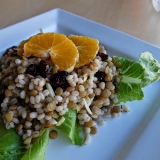
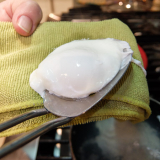
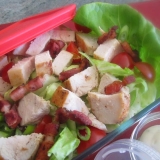
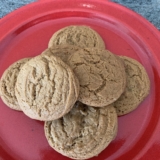
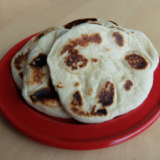
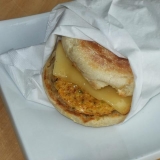
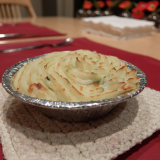
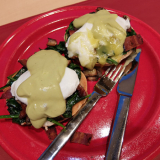
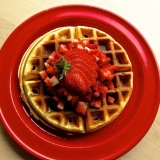
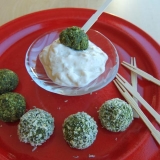
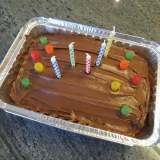
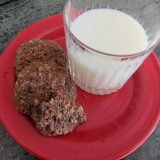
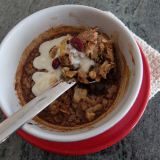
Leave A Comment